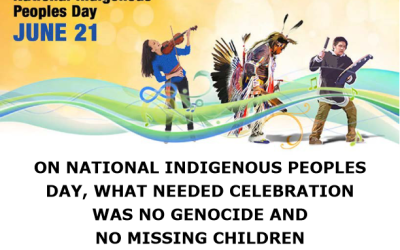
That some of Manitoba’s 63 First Nations are experiencing problems with governance should come as no surprise. They’ve been through a lot. But a fundamental human principle—that ideas have consequences—teaches that every error in public policy has an equal and sometimes more powerful corrective. There are better ways for governments to conduct their affairs, and objective tools exist for improving complex systems of self-rule.
In that spirit, the Frontier Centre this week released the first report of an ambitious project, the Aboriginal Governance Index. Intended to inspire a search for better practices, the Index surveyed samples of people in all but four of those communities and asked them how they thought their governments were doing. After crunching the data, we found that in the opinion of their own residents these ten First Nations scored the best:
| First Nation | Score |
| Poplar River | 75% |
| Sagkeeng | 70% |
| Marcel Colomb | 69% |
| Rolling River | 67% |
| Gamblers | 66% |
| Swan Lake | 63% |
| Fisher River | 62% |
| Berens River | 61% |
| Long Plain | 60% |
| Brokenhead | 58% |
A full report with details of other scores and the work that produced them is now available. It includes those First Nations who did not score as well, but the purpose of the Index is not to point fingers or lay blame. At least to the people who live in these ten communities, their governments are doing pretty well. We encourage the rest to find out what compose the basic elements of good governance, and to replicate the success of their brothers and sisters in the top ten.
How did we arrive at the scores? We sent our Aboriginal Policy Fellow, Don Sandberg, who is a member of the Norway House Cree Nation, out with a survey that asked a series of basic questions, divided into six categories: elections, administration, human rights, transparency, services and the economy. Here’s a few sample questions, one from each section:
Then, with scoring informed by classical values of good governance—transparency, neutrality and separation, among others—and by the valuable grassroots information gathered over years by Sandberg, we assigned weights to the responses. The data that emerged was then gathered, tabulated, crunched and placed on a curve to make the results intelligible.
Undertaken by the Frontier’s Manning Intern, the multi-talented Rebecca Walberg, the job of data analysis revealed some interesting correlations. Bands who scored the highest in the sections on human rights and transparency ranked near the top overall. Those who most fulsomely respected their citizens’ rights also scored well in services, and the most transparent regimes were also the best administered. Those data connections speak volumes about the universal principles of good governance.
Along the way, we learned many lessons about the construction of the survey, the relative effectiveness of different methods of distributing it and about difficulties encountered in such survey work. They will be useful down the line. It is hoped this first, experimental stab at ranking elements of First Nations’ governance in Manitoba will eventually be expanded to neighbouring provinces and eventually the whole country.
Certainly the need exists. Aboriginal communities who survived the turbulent periods of conquest, disease, European settlement and treaties assigning them reserved lands had suffered a series of cultural and physical shocks difficult to fathom. Then the Indian Act built walls insulating tribal economies from credit and capital, barriers that still prevent them from enjoying the wider Canadian prosperity, even as their traditional resource-based industries declined.
Now, under the well-established federal policy of self-government, small communities with scarce human and financial resources are undertaking a gargantuan task: to offer the entire range of government services—all the things that our municipal, provincial and federal governments now provide, sometimes not too well—through one band council. As Tom Flanagan warned in his prescient book, First Nations, Second Thoughts, we may be setting them up for failure.
As difficult as it was, Sandberg’s yeoman survey work had its rewards. “On home visits, he reported, “the people were friendly and hospitable. Only on two occasions did I meet some resistance from band members who were critical of anyone coming on to their reserve. Many lacked clean drinking water and lived in crowded homes desperately in need of repairs. Despite a general lack of employment, these people were some of the best I have ever had the opportunity to meet.”
Unfortunately that warm reception from individuals and families did not always apply with band leaders and officials, some of whom were hostile to the surveying effort and sometimes followed Sandberg about and ordered him off. But most discouraging were the living conditions he encountered on some reserves, levels of poverty and despair that most Canadians would judge as incredible.
That’s all the more reason to continue with this work.



